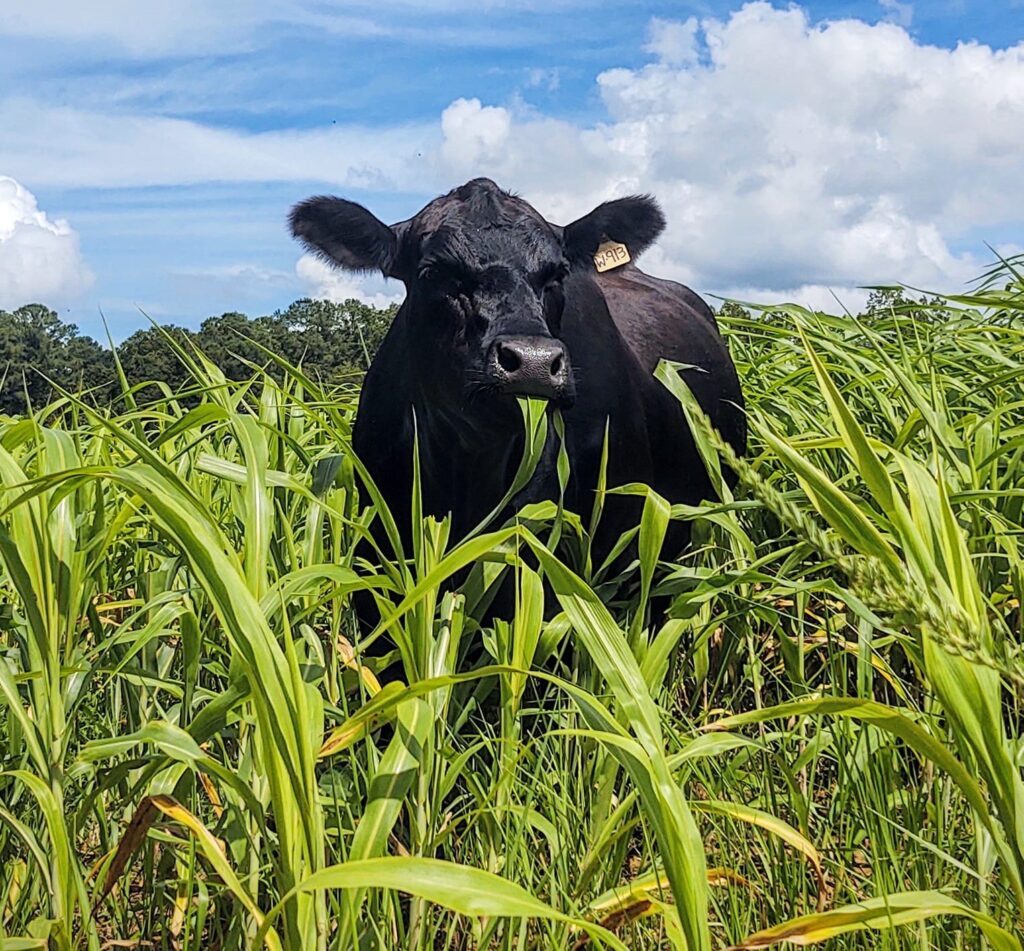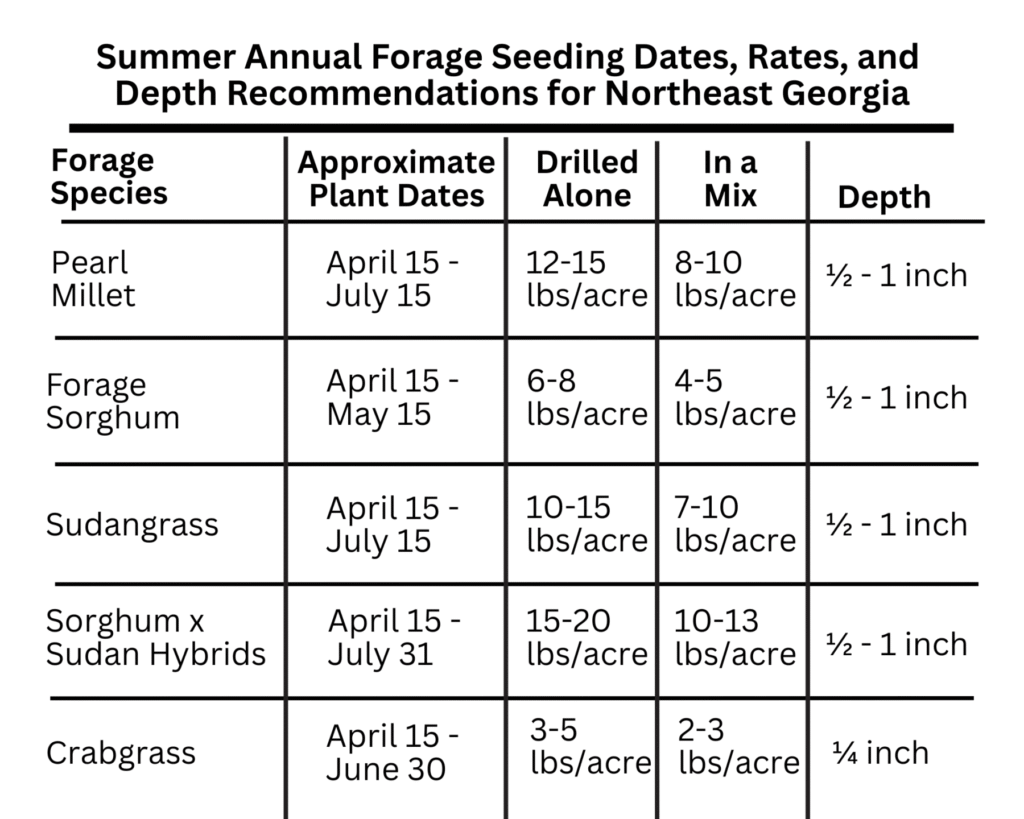By Shanna Reynolds
A majority of local cattle producers rely primarily on permanent grass pastures and hay purchases to feed their animals. These simple systems can be managed effectively with nominal labor, but I want to encourage you to consider adding annual forage plantings into your scheme. The next few weeks are the optimal time of year to plant many summer annual forages – an excellent tool for bridging production gaps in perennial forage systems.
Summer annual forages are a great supplement to tall fescue systems during the hot weather slump. They also make great additions to bermudagrass systems when producers need higher quality. The most common varieties cattle producers utilize in our area are sorghums, sudangrass, millets, and crabgrass. These annuals are suited for grazing or harvesting as baleage for use during the winter.

Summer annual plantings can be made in the spring as soon as soil temperatures are above 65 degrees at 2 inches deep. If you find yourself a little behind in planning so far this year, no worries. Most of these forage supplements can be planted through late July and still reach yield goals. Summer annuals are known for being productive in a short amount of time and can typically be grazed as little as 60 days after planting. They are also saved and used as emergency forage during drought periods.
A couple of cautions to note. Summer annual grasses can be difficult to dry for hay, but work well for ensiled baleage due to their high sugar content. Be cautious of planting depth for establishment, as I have seen many local producers fail to get a good stand from planting too deep. Use the chart included here to determine the proper planting depth and seeding rate per acre.
Sorghum, the finer-stemmed sudangrass, and sorghum-sudangrass hybrids have been used extensively throughout the Southeast due to their high yield potential. Hybrids have the highest yield of any summer annuals if adequate rainfall is received or irrigation is provided. However, use caution on unirrigated fields because these grasses contain toxic levels of nitrates and prussic acid when under stress, such as drought or frost.
There are many millet species (ex: Browntop, Japanese, Pearl) with Pearl Millet being the variation UGA specialists recommend for forage systems. Pearl millet is more drought-tolerant compared to sorghums and sudangrasses and can tolerate lower soil pH than sorghum. These forages are susceptible to nitrate accumulations, especially after fertilization, but do not have the prussic acid issues mentioned previously. It is a slow-maturing plant, making it very suitable for grazing.
Crabgrass is a low-growing grass found in nearly every field in the county. Although it can be viewed as an undesirable weed in lawns and hayfields, it is actually a very nutritious forage option for livestock. Its palatability and high digestibility make it a preferred species for grazing livestock. While an annual, many cattlemen find that crabgrass will reseed itself each year.
I’ve just covered popular options here, but many different grasses and legumes not mentioned are suitable for summer livestock feed. Teff is a summer annual grain that is a staple in Africa, but little research has been done on its use for livestock forage in our area. Our office is currently collaborating with a farmer to plant test plots of Teff here in Oglethorpe County. If that goes well, I may dedicate another entire article to this summer grass alone.
Call our office with further questions on summer annual grazing options as well as recommendations for fertilization, pest management, and grazing heights.
